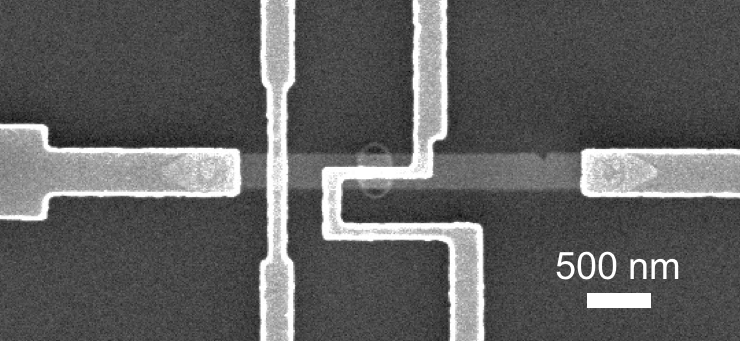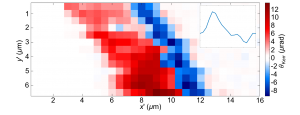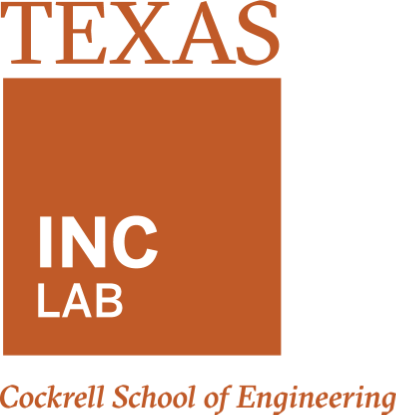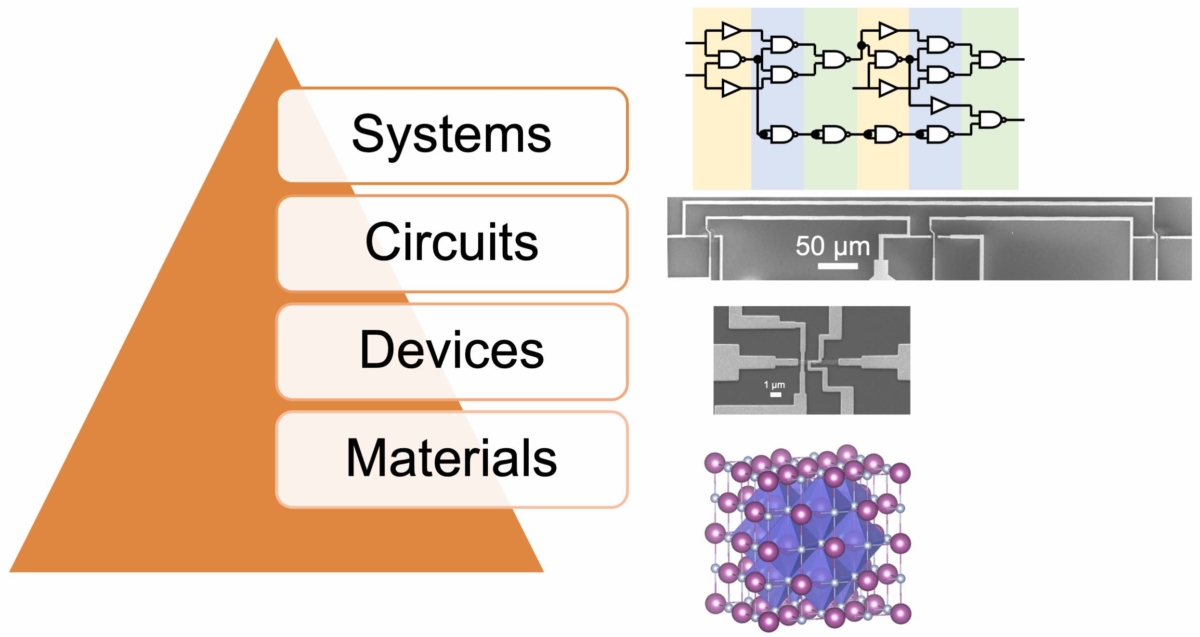Integrated Nano Computing Lab
At the INC Lab, led by Prof. Jean Anne Incorvia at the University of Texas at Austin, we develop practical nano-devices for the future of computing. We study the fundamental physics and materials properties of emerging materials, and work to bridge the gap from test structures to practical devices to circuits and systems. This vertical approach includes theoretical and experimental work at the materials, devices, and circuits levels. We seek to understand the materials properties, and then show how they can be designed into devices that do not just stand alone, but can perform useful computing tasks.
We are facing a time when we are reaching the limits of scaling improvements using current technology. Current transistors waste energy both while switching and when idle, which ends up as wasted heat in our computers. On the other end of the spectrum, we are facing new big-data applications for computing that require large, dense memories that are distributed with logic, and applications like artificial intelligence and neuromorphic computing that require massive parallel computation.
New physics and materials, such as magnetic materials and 2D materials, have the potential for more energy efficient computing. They also have novel physical properties that can be utilized, such as naturally low-dimensional sizes for ultra-scaled electronics, non-volatility (keeping its state when off), oscillatory dynamics, device-to-device interactions, low to no idle power dissipation, low-temperature fabrication, and in-memory computing possibilities. This is an exciting time where we have the tools to apply new types of physics and materials to real-world devices, with a strong motivation to do so.
We are also interested in other applications of nanotechnology, such as quantum computing and medicine.
Research Highlights


Magnetic Logic Devices and Circuits
We are researching new device and circuit designs for computation using magnetic materials.

Neuromorphic Computing
We work on designing and building magnetic resistive devices for analog/neuromorphic/bio-inspired computing.

Spintronics using 2D TMD Materials
2D transition metal dichalcogenide (TMD) materials have emerging applications for spintronics. We are studying the spin and valley Hall effect in TMD transistors such as WSe2 and WS2.

Materials for Magnetic Tunnel Junctions
We are investigating new materials for both the electrodes and tunnel barrier to improve the on/off ratio and functionality of magnetic tunnel junctions.

Ultra-Scaled Transistors using 2D Materials
We are investigating 2D transistors with materials such as TMDs and black phosphorus.

New Spintronic 2D Materials
We are studying new types of low-dimensional materials with promising applications in spintronics.



